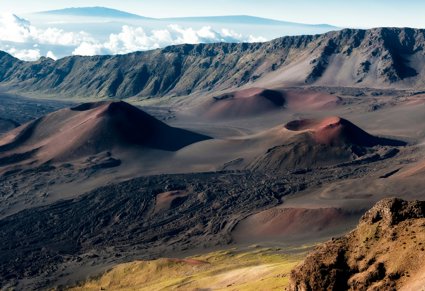
Lesson one: Case study
Key questions
What are the main characteristics of the volcanoes in this study?
What potential hazards are associated with each of the volcanoes?
How do eruptions in Chilean volcanoes compare with the Icelandic eruption?
Aims
To learn about volcanism in Chile and develop the key terminology relating to volcanic landscapes, which will help build an A-Level case study of three contrasting volcanic cones assessing the different material they produce as well as focusing on associated hazards. The study will include:
-
A review of the location and characteristics of each volcano
-
A comparison with the impacts of the Eyjafjallajokul eruption in Iceland in 2010
-
An assessment of the potential volcanic hazards linked to each cone
This lesson supports the teaching of volcanic characteristics at different plate settings, and comparisons between different volcanic eruptions in different locations.
Starter
Look at the powerpoint and video clip which outline the different types of volcanic cones, and volcanic activity commonly found at different plate boundaries.
Use the powerpoint and the video to answer the following:
-
How are volcanoes different at divergent and convergent plate boundaries?
-
Why do some volcanoes erupt pyroclastic flows and lahars?
Look at the volcanoes in Chile file and answer the following:
-
What are the characteristics of this volcano
-
What type of plate boundary has it formed on
-
What type of volcanic products do you think it will erupt and why?
Main Activity
Before we start the main lesson, look at the list of terms shown on the terminology file. Match the correct term with the correct definition; work in pairs to find the correct answers or use this as a mini test of your prior knowledge.
The following three tasks have been set to give the students a better understanding of the Chilean volcanoes.
Understanding the Chilean volcanoes
Take a look at the following resources which give introductory information into the three volcanoes, Lascar, Puyehue and Villarrica, visited by the researchers studying volcanic emissions.
-
Map of the volcanoes
-
Fieldwork summary document (from the researchers)
-
Photographs of each volcano
Create a fact file for each volcano giving specific information on:
-
The location and surrounding geographical area
-
The volcano type and its characteristics
-
Products of volcanic eruptions from past eruptions
-
A summary of the three volcanoes to assess the differences between them
Comparison of the Puyehue Cordon Caulle eruption in 2011 with the Icelandic eruption of Eyjafjallajokul in 2010
Look at the video clips below
Using the information, work in pairs to compile a report on the similarities and differences of the two eruptions. These should serve as two contrasting examples of recent volcanic eruptions.
-
News clip showing an outline details of the Puyehue-Cordon Caulle eruption of 2011
-
A news article and video on the Puyehue Cordon Caulle eruption of 2011
Further reading
Answer the following essay title: ‘The impact of a volcanic eruption is more about response than magnitude’. Discuss with reference to one example.
Plenary
Using all of the resources from the lesson and the photographs below, write an assessment of the main hazards for each volcano.
Resources:
-
Pictures of possible hazard impacts on the local areas around Lascar, Puyehue and Villarrica
-
Maps of volcano locations
To do this think of the answers to the following questions:
-
What are the main types of human activity in the local area?
-
How frequent are eruptions?
-
What areal extent do eruptions have?
-
What type of volcanic hazard is most likely from each cone?
Think also about how you may mitigate against these hazards.
